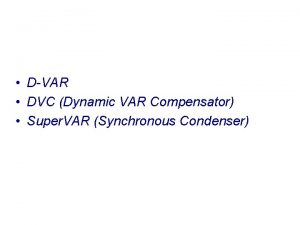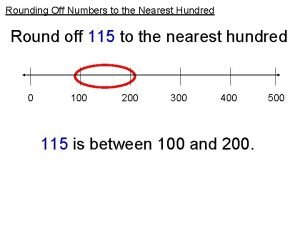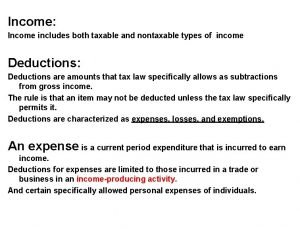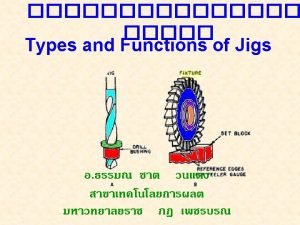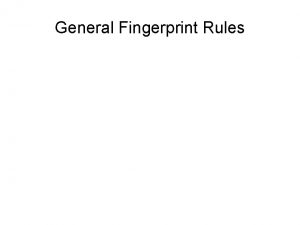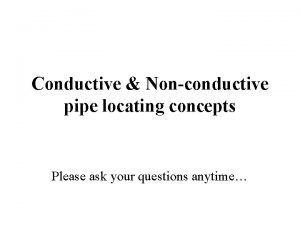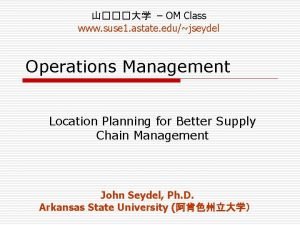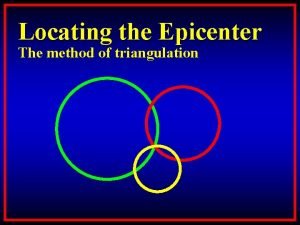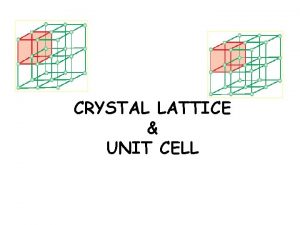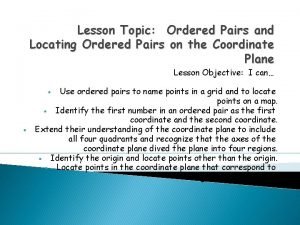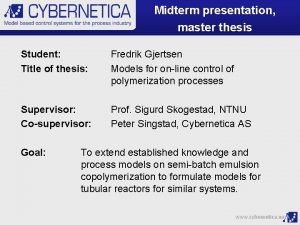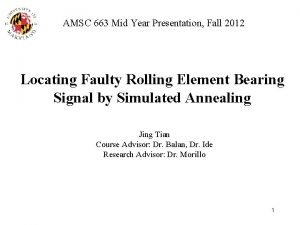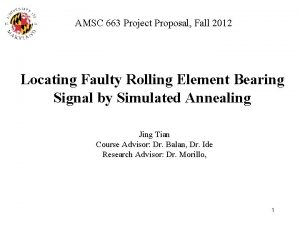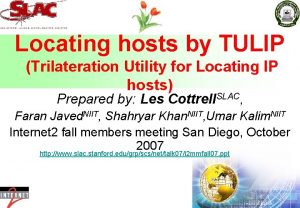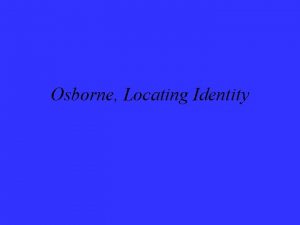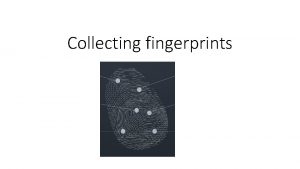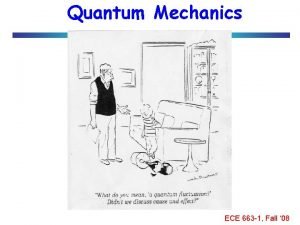AMSC 663 Mid Year Presentation Fall 2012 Locating















![Simulated Annealing • Simulated annealing [6] is a metaheuristic global optimization tool. Initialize the Simulated Annealing • Simulated annealing [6] is a metaheuristic global optimization tool. Initialize the](https://slidetodoc.com/presentation_image_h2/1201259b8d71ad7991e4a4be43ad4fe5/image-16.jpg)












![References [1] Wind Stats Newsletter, 2003– 2009, vol. 16, no. 1 to vol. 22, References [1] Wind Stats Newsletter, 2003– 2009, vol. 16, no. 1 to vol. 22,](https://slidetodoc.com/presentation_image_h2/1201259b8d71ad7991e4a4be43ad4fe5/image-29.jpg)
- Slides: 29

AMSC 663 Mid Year Presentation, Fall 2012 Locating Faulty Rolling Element Bearing Signal by Simulated Annealing Jing Tian Course Advisor: Dr. Balan, Dr. Ide Research Advisor: Dr. Morillo 1

Background • Rolling element bearings are used in rotating machines in different industry sections. Bearings Computer cooling fan Bearing Induction motor http: //en. wikipedia. org/wiki/File : Silniki_by_Zureks. jpg Wind turbine gearbox http: //en. wikipedia. org/wiki/File: Scout_moor_ gearbox, _rotor_shaft_and_brake_assembly. jpg Bearings inside Gas turbine engine http: //en. wikipedia. org/wiki/File: J 85_ge_17 a_turbojet_engine. jpg Bearing

Health Monitoring of Bearing • Bearing failure is a concern for many industrial sections - Bearing fault is a main source of system failure, e. g. : Gearbox bearing failure is the top contributor of the wind turbine’s downtime [1, 2]. - The failure of bearing can result in critical lost, e. g. : Polish Airlines Flight 5055 Il-62 M crashed because of bearing failure [3]. LOT Polish Airlines Il-62 M • Vibration signal is widely used in the health monitoring of bearing - It is sensitive to the bearing fault. The fault can be detected at an early stage. - It can be monitored in-situ. - It is inexpensive to acquire. http: //en. wikipedia. org/wiki/File: LOT_Ilyushin_Il-62 M_Rees. jpg http: //en. wikipedia. org/wiki/Fi le: Danish. Wind. Turbines. jpg Offshore wind turbines 3

Project Objectives • How to detect the bearing fault? Test if the vibration signal x(t) contains the faulty bearing signal s(t) - Faulty bearing: x(t) = s(t) + ν(t) - Normal bearing: x(t) = ν(t), where v(t) is the noise, which is unknown • How to test the existence of faulty bearing signal s(t)? Check if unique frequency component of s(t) can be extracted. - Faulty bearing signal is a modulated signal : s(t) = d(t)c(t) - d(t) is the modulating signal. Its frequency component is the fault signature. The frequency is provided by the bearing manufacturer. - c(t) is the carrier signal, which is unknown. • Objective of the project: given vibration signal x(t), test if the frequency component of d(t) can be extracted. 4

Approach • • • Use FIR filter-bank to decompose the test signal into sub-signals. Use spectral kurtosis (SK) to locate the sub-signal which contains faulty bearing signal s(t). SK is the kurtosis of the discrete Fourier transform of the vibration signal. The subsignal containing faulty bearing signal has higher SK [4]. Apply simulated annealing (SA) to optimize the frequency band of the located sub-signal. - The optimum frequency band is determined by the optimum filter. - The filter is optimized by solving the following problem: fc is the frequency band’s central frequency; Δf is the width of the band; M is the order of FIR filter; f. Faul is the fault feature frequency; fs is the sampling rate. • Perform envelope analysis (EA) to the sub-signal which has the optimum frequency band to extract the fault feature frequency (modulating frequency) 5

Flow Chart of the Algorithm SA Maximize SK by fc, Δf, M x(n) FIR filter hi (fci, Δfi, Mi) x(n) yi(n) SK Optimized yo(n) FIR filter h(fco, Δfo, Mo) Maximized SK SKo SKi EA a(n) FFT A(f) Magnitude |A(f)| x(n) is the sampled vibration signal; yi(n) is filtered output of the ith FIR filter hi; SKi is the SK of the yi(n); yo(n) is the output of the optimized FIR filter; a(n) is the envelope of yo(n) ; A(f) is the FFT of a(n) The bearing is normal No f=f. Fault? Yes The bearing 6 is faulty

Filter-bank 7

Band-Pass Filter the Vibration Signal • FIR filter is defined as - M is the order of the filter. bi is the coefficient of the filter. • Matlab’s built-in function “fir 1” is used. It uses the following method - hd(n) is the impulse response of the filter - w(n) is the Hamming window • Therefore, the filtered signal y(n) is a function of fc, Δf, M. 8

Initial Input for Simulated Annealing • Initial input w(fc 1, Δf 1, M 1) is obtained by calculating SK for a binary tree of FIR filter-bank. - Output of the jth filter at level k is - Structure of the filter-bank • Frequency bands are ranked according to their SK value from large to small. Top h frequency bands are selected as the initial input. 9

Validation of the Filter-bank • The test signal has four frequency components. - One component locates at the edge of two filters in frequency domain. - Two components locates near the edge of the filter. 10

Validation of the Filter-bank • Two level filter-bank is used, which has 4 filters. For sampling rate = 1024 Hz, the filters are [0, 128]Hz, [128, 256]Hz, [256, 384]Hz, [384, 512]Hz • Frequency components are observed in the right frequency bands. But the magnitude is reduced. Magnitude=9. 5 Magnitude=7. 6 Magnitude=2. 85, 3. 8 11

Spectral Kurtosis 12

Spectral Kurtosis • Definition of spectral kurtosis where Y(m) is the DFT of the signal y(n); κr is the rth order cumulant. Both y(n) and Y(m) are N points sequences. SK is a real number. • Estimation of spectral kurtosis - DFT of a stationary signal is a circular complex random variable, and E[Y(m)2]=0, E[Y* (m)2]=0. [5] 13

Result of SK • The SK have small value for white noise and high values for periodic signal. - White noise, SK = -0. 0406 - Pure periodic signal , SK = 510 14

Simulated Annealing 15
![Simulated Annealing Simulated annealing 6 is a metaheuristic global optimization tool Initialize the Simulated Annealing • Simulated annealing [6] is a metaheuristic global optimization tool. Initialize the](https://slidetodoc.com/presentation_image_h2/1201259b8d71ad7991e4a4be43ad4fe5/image-16.jpg)
Simulated Annealing • Simulated annealing [6] is a metaheuristic global optimization tool. Initialize the temperature T Use the initial input vector W Compute function value SK(W) • In each round of searching, there is a chance that worse result is accepted. This chance drops when the iterations increase. By doing so, the searching can avoid being trapped in a local extremum. Generate a random step S Compute function value SK(W+S) < SK(W) Yes Replace W with W+S, reduce T No Keep x unchanged, reduce T No exp[(SK(W) SK(W+S) )/T] > rand ? Yes Termination criteria reached? Yes End a round of searching 16

Validation of SA: 1 -D Function • One dimensional function optimization - The function has a global minimum and many local minimums. - The function is used to check the fundamental of the algorithm. - The global minimum is y=-100 when x= π 17

Setting of the SA T = 1000 Initialize the temperature T Use the initial input vector W W: A random number in [-10, 10] Compute function value SK(W) S: A random number in [-10, 10] Generate a random step S Compute function value SK(W+S) < SK(W) Yes Replace W with W+S, reduce T Termination criteria reached? Yes End a round of searching No Keep x unchanged, reduce T T = 0. 99 T No exp[(SK(W) SK(W+S) )/T] > rand ? Yes T = 0. 99 T 1, 000 iterations 18

Validation of SA: Result • Result - SA ends at 1, 000 iterations. The optimum is found at 943 th iteration. - The minimum found is -99. 9996, - Optimum variable x= 3. 1389 19

Validation of SA: 3 -D Function • Three dimensional function optimization - The function has three variables, it is used to validate the algorithm… - The global minimum is y=-150 when x 1= π, x 2=0, and x 3=- π. 20

Setting of the SA T = 1000 Initialize the temperature T W: A vector, each element is a number in [-10, 10] S: A vector, each element is a number in [-10, 10] Use the initial input vector W Compute function value SK(W) Generate a random step S Compute function value SK(W+S) < SK(W) Yes Replace W with W+S, reduce T Termination criteria reached? Yes End a round of searching No Keep x unchanged, reduce T T = 0. 99 T No exp[(SK(W) SK(W+S) )/T] > rand ? Yes T = 0. 99 T 100, 000 iterations 21

Validation of SA: Setting and Result • Result - SA ends at 100, 000 iterations. The optimum is found at 76, 455 th iteration. - The minimum found is -149. 5179 - Optimum variable x= [3. 1437 15. 6941 -12. 5659] 22

Envelope Analysis 23

Envelope Analysis • The enveloped signal is obtained from the magnitude of the analytic signal. • The analytic signal is constructed via Hilbert transform. • Hilbert transform shifts the signal by π/2 via the following formula • The analytic signal is constructed • Magnitude of the analytic signal forms the enveloped signal. Enveloped signal Original signal Hilbert transform of the original signal 24

Validation of Envelope Analysis: Test Signal • A modulated signal y is used to validate the algorithm. 200 Hz 190 Hz 210 Hz 25

Validation of Envelope Analysis • After envelope analysis, modulating signal is obtained with a different magnitude. • After FFT, the modulating frequency component is obtained. 10 Hz 26

Progress • October - Literature review; exact validation methods; code writing • November - Middle: code writing - End: Validation for envelope analysis and spectral kurtosis • December - Semester project report and presentation • February - Complete validation • March - Adapt the code for parallel computing • April - Validate the parallel version • May - Final report and presentation 27

Remaining Work at this Stage • Complete the validation of spectral kurtosis. • Put the sub-programs together to a single program. • Validate the whole program. 28
![References 1 Wind Stats Newsletter 2003 2009 vol 16 no 1 to vol 22 References [1] Wind Stats Newsletter, 2003– 2009, vol. 16, no. 1 to vol. 22,](https://slidetodoc.com/presentation_image_h2/1201259b8d71ad7991e4a4be43ad4fe5/image-29.jpg)
References [1] Wind Stats Newsletter, 2003– 2009, vol. 16, no. 1 to vol. 22, no. 4, Haymarket Business Media, London, UK [2] H. Link; W. La. Cava, J. van Dam, B. Mc. Niff, S. Sheng, R. Wallen, M. Mc. Dade, S. Lambert, S. Butterfield, and F. Oyague, “Gearbox Reliability Collaborative Project Report: Findings from Phase 1 and Phase 2 Testing", NREL Report No. TP-5000 -51885, 2011 [3] Plane crash information http: //www. planecrashinfo. com/1987 -26. htm [4] J. Antoni, “The spectral kurtosis: a useful tool for characterising non-stationary signals”, Mechanical Systems and Signal Processing, 20, pp. 282 -307, 2006 [5] P. O. Amblard, M. Gaeta, J. L. Lacoume, “Statistics for complex variables and signals - Part I: Variables”, Signal Processing 53, pp. 1 -13, 1996 [6] S. Kirkpatrick, C. D. Gelatt, and M. P. Vecchi, "Optimization by Simulated Annealing". Science 220 (4598), pp. 671– 680, 1983 29
 Amsc dvar
Amsc dvar 700
700 Cignaforhcp
Cignaforhcp 8006631463
8006631463 Leaf drill jig assembly drawing
Leaf drill jig assembly drawing Locating places
Locating places Rules in core location
Rules in core location Non conductive pipe
Non conductive pipe Earth science regents lab practical
Earth science regents lab practical Four ways of locating the ethical in you
Four ways of locating the ethical in you Recruitment is the process of locating identifying and
Recruitment is the process of locating identifying and Champion cooling company is locating a warehouse
Champion cooling company is locating a warehouse Finding the epicenter using triangulation method
Finding the epicenter using triangulation method Smart city locating
Smart city locating Locating tetrahedral and octahedral voids
Locating tetrahedral and octahedral voids Stated main idea definition
Stated main idea definition Locating ordered pairs on the coordinate plane
Locating ordered pairs on the coordinate plane Mid year budget review
Mid year budget review Classroom management mid year
Classroom management mid year Cadca mid year
Cadca mid year Mid year budget review
Mid year budget review Mid term thesis presentation
Mid term thesis presentation Year 6 leaving poem
Year 6 leaving poem Fall protection presentation
Fall protection presentation Project seminar presentation
Project seminar presentation Final year project presentation
Final year project presentation Fyp presentation template
Fyp presentation template Brian finan
Brian finan Fetal brow
Fetal brow Fundal height transverse lie
Fundal height transverse lie
